Bamboo Pellet Fuel: A Clean Energy Opportunity
Biomass pellets are now seen as a reliable alternative energy source. Compressing loose biomass into dense pellets helps reduce waste and makes storage and transport more efficient. It also supports cleaner, more sustainable energy practices.
Among many raw materials used for pellet production, bamboo is gaining popularity. It forms stable pellets, burns cleanly, and comes from a renewable source. This makes it a smart and sustainable choice for biomass fuel.

Why Bamboo is Ideal for Pellet Fuel Production
Bamboo is well-suited for biomass pellet production because of its fast growth, strong structure, and high energy content.
1.Growth Characteristics
Bamboo is one of the fastest-growing plants on Earth, with growth rates reaching up to 91 cm per day, much faster than most softwood species.
Its maturation cycle is short, with common bamboo species ready for harvest in just 3 to 5 years. This rapid regeneration ensures a sustainable raw material supply. This is crucial for pellet fuel production.
2.Structural Characteristics
Bamboo contains 40%–60% cellulose, 15%–25% hemicellulose, and 20%–40% lignin. These components not only increase the calorific value of the pellets but also enhance the stability of pellet formation during compression. Lignin acts as a natural binder, eliminating the need for added glue, which improves its environmental sustainability.
3.Energy Characteristics
Dried bamboo, before pelletizing, has a high calorific value of approximately 16 MJ/kg with a moisture content of about 13%. Its fixed carbon content is around 15%, while the volatile matter content is nearly 80%, which means bamboo is easy to ignite and burns steadily. Bamboo has an extremely low sulfur content, about 0.03%, and produces almost no pollution during combustion.
The ash content of bamboo mainly comes from its inorganic minerals. The table below shows the content of typical ash-forming elements in different parts of the bamboo culm:
| Location in the culm | Si(%) | Fe(%) | Mg(%) | Na(%) | Ca(%) | K(%) |
| Top | 1.05 | 0.05 | 0.15 | 0.003 | 0.12 | 0.11 |
| Middle | 0.86 | 0.04 | 0.13 | 0.01 | 0.07 | 0.15 |
| Bottom | 1.13 | 0.04 | 0.23 | 0.02 | 0.09 | 0.26 |
As seen from the table, the overall content of inorganic elements in bamboo is not high, which means its pellet products have low ash content. This makes it easier to promote and sell, and more likely to pass environmental approval.
For this reason, bamboo not only competes with wood but outperforms agricultural residues like straw and stalks. The pellets made from bamboo also perform excellently in practical applications.
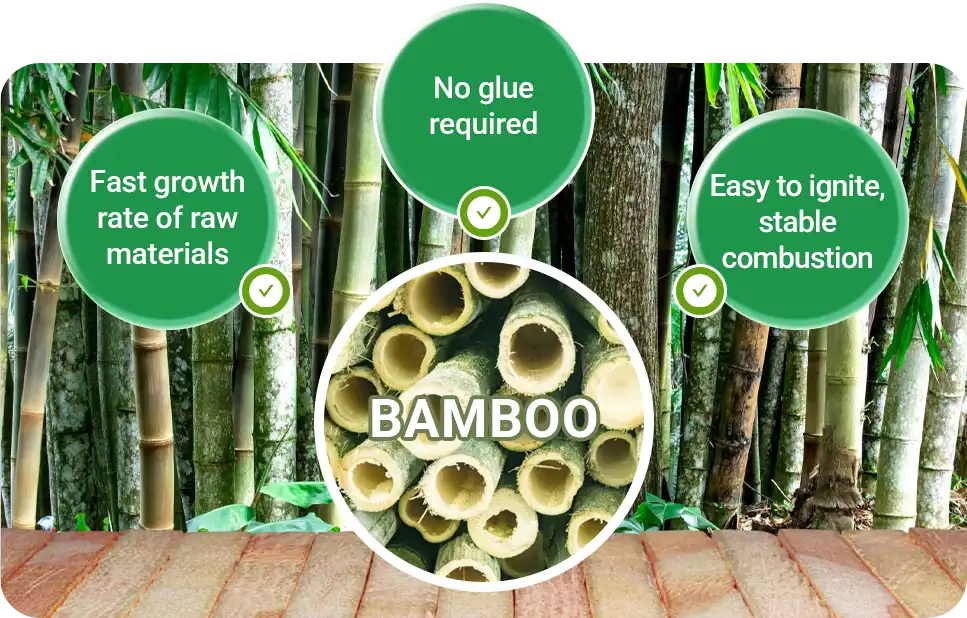
Advantages of Bamboo Pellet Fuel
- Cost Savings: Using bamboo pellets can reduce energy costs by up to 50% compared to traditional heating methods like gas, oil, and electricity.
- Environmental Benefits: Compared to fossil fuels, bamboo pellets have lower ash and sulfur content, which helps reduce harmful emissions. This significantly lowers the impact of the greenhouse effect and acid rain.
- Carbon Neutrality: Bamboo absorbs large amounts of carbon dioxide during its rapid growth. The carbon released from burning bamboo pellets is reabsorbed by new bamboo forests, achieving carbon neutrality or even negative carbon emissions, thereby reducing overall carbon footprint.
- High Calorific Value: Bamboo pellets have a calorific value comparable to coal, around 20.1 MJ/kg. They occupy less space, making them ideal for situations where space is limited but energy savings are needed.
- Versatility: Bamboo fuel pellets are versatile and can be used in various stoves for power generation, heating, and cooking. It is also suitable for medium and small industrial boilers, used for steam generation or combined heat and power.
.webp)
Bamboo pellets perform excellently in environmental friendliness, economic efficiency, and sustainability, making them a strong alternative to traditional energy sources. They have a promising future in the ongoing energy transition.
Development Prospects of Bamboo Pellet Fuel
From a global perspective, the bamboo pellet market is steadily growing. It is expected that the market size will reach $110.5 million this year, with a compound annual growth rate (CAGR) of 4.2%.
In Asia, countries such as China, India, and Vietnam have become major producers of bamboo pellets. With abundant bamboo resources and advanced processing capabilities, these countries have gradually developed an industrial advantage.
At the same time, many countries are encouraging the use of renewable energy sources through carbon reduction targets and renewable energy policies. For example, India has launched the "National Bamboo Mission," which aims to develop a more complete and sustainable bamboo industry chain by expanding planting, increasing yield, and promoting deep processing.
Overall, the development prospects of bamboo fuel pellets are very promising. If you are considering entering this field, now is a great time to get involved.
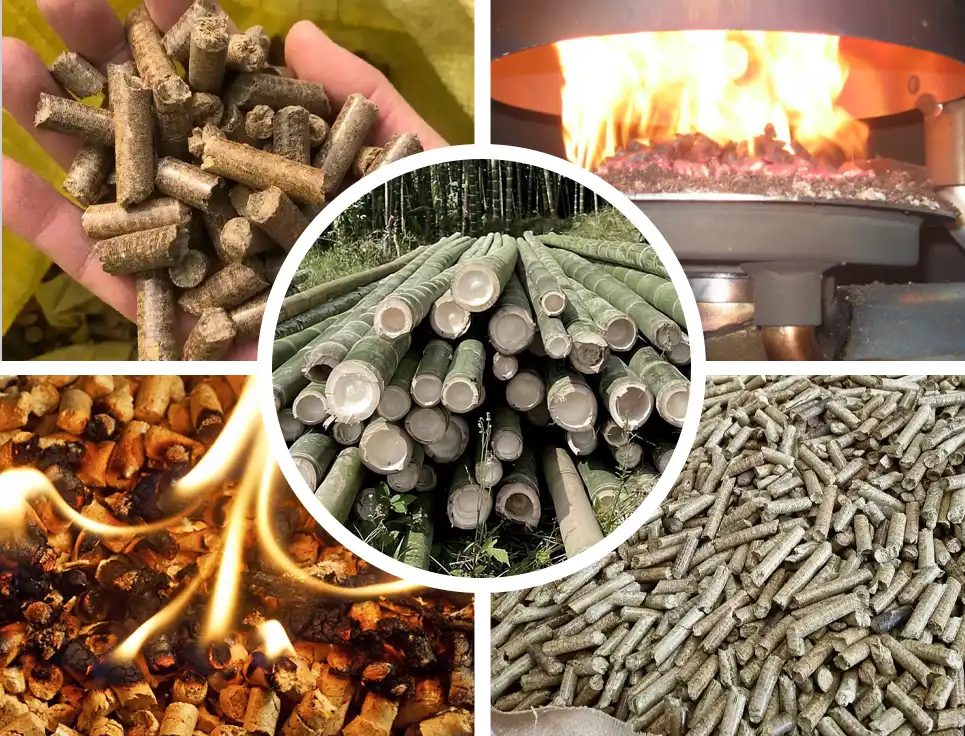
Starting Your Bamboo Pellet Production Business
Before launching a bamboo pellet production project, understanding the production process helps you plan equipment selection and operations more effectively.
The Bamboo Pellet Production Process
The production process of bamboo pellets is essentially the same as that of wood pellets. Bamboo is first crushed into the right particle size for pelletizing. It is then dried to reduce moisture content before being compressed into pellets. The newly formed pellets need to be cooled and hardened. Unformed bamboo powder is screened out. Finally, the pellets are packaged for storage or transportation.
The following equipment is required throughout the process:
- Electric Cabinet: Controls the entire production line.
- Crusher: Crushes bamboo or by-products into 1-3mm particle sizes.
- Dryer: Reduces moisture content to 12%-16% for pelletizing.
- Bamboo Pellet Machine: Compresses material into pellets under high temperature and pressure.
- Cooler: Cools and shapes pellets, improving hardness and stability.
- Packaging Machine: Automatically bags cooled pellets for storage and transport.
Pelletizing is the critical step, as it determines pellet formation and overall production efficiency.
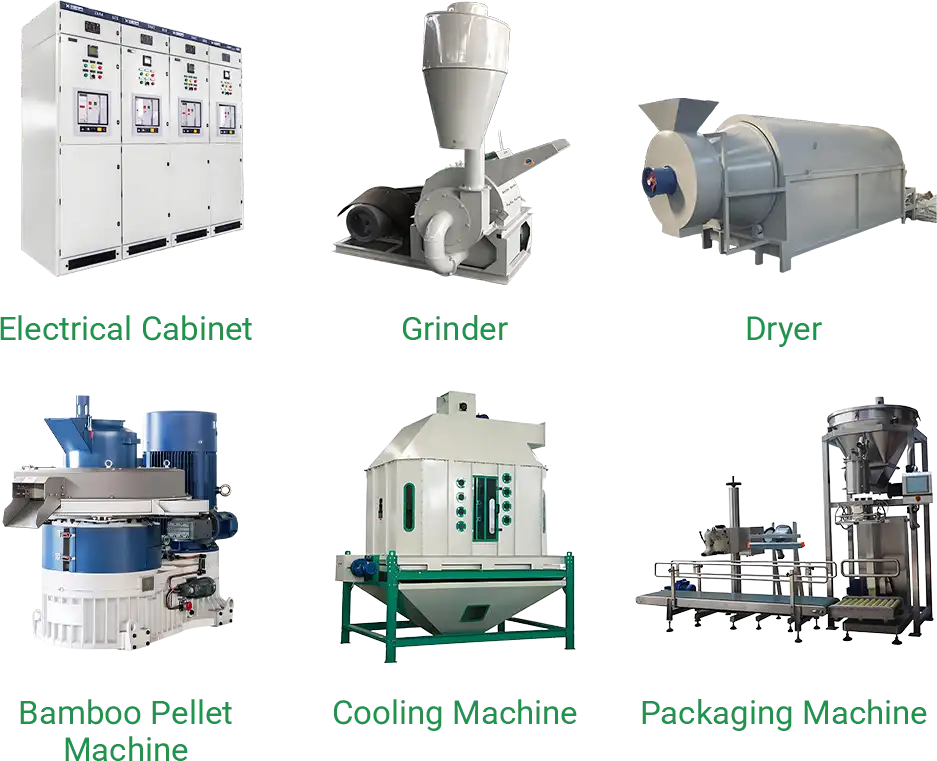
Kawise Machinery: Complete Bamboo Pellet Production Solutions
Kawise offers both ring die and flat die pellet mills to meet varying production capacities and raw material needs. These mills are easy to operate and maintain.
For large-scale, continuous production, we recommend the ring die pellet mill for high output and stable operation.
For smaller projects like home use or startups, the flat die pellet mill is a practical choice. Its compact design and flexibility make it ideal for such applications.
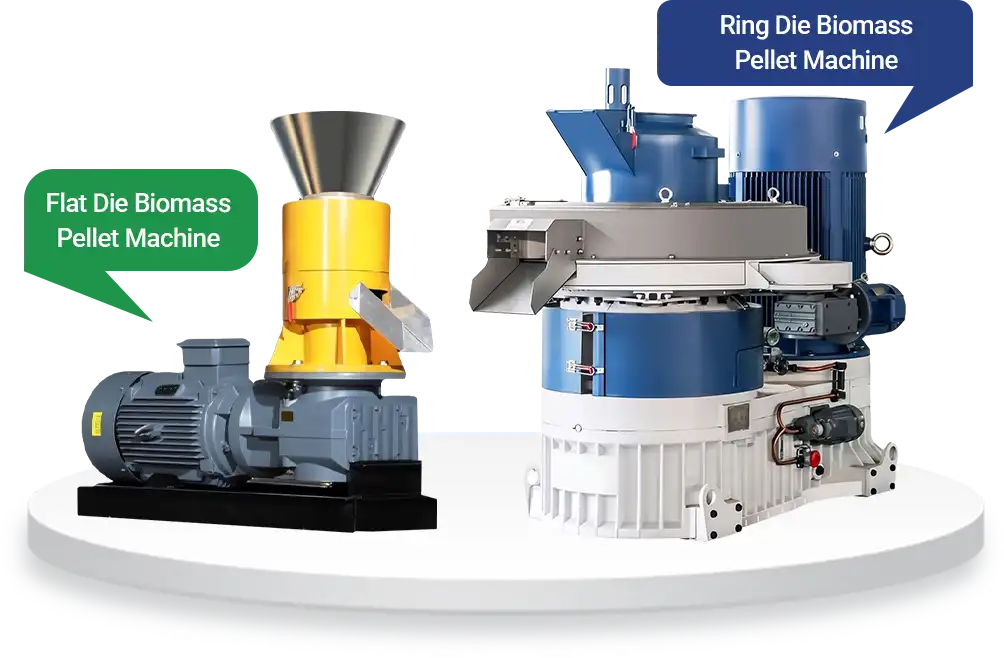
We also offer a full range of equipment, including crushers, dryers, coolers, and packaging machines, to help you build an efficient production system.
If you're planning to start a bamboo pellet business, contact us for tailored equipment and solutions!
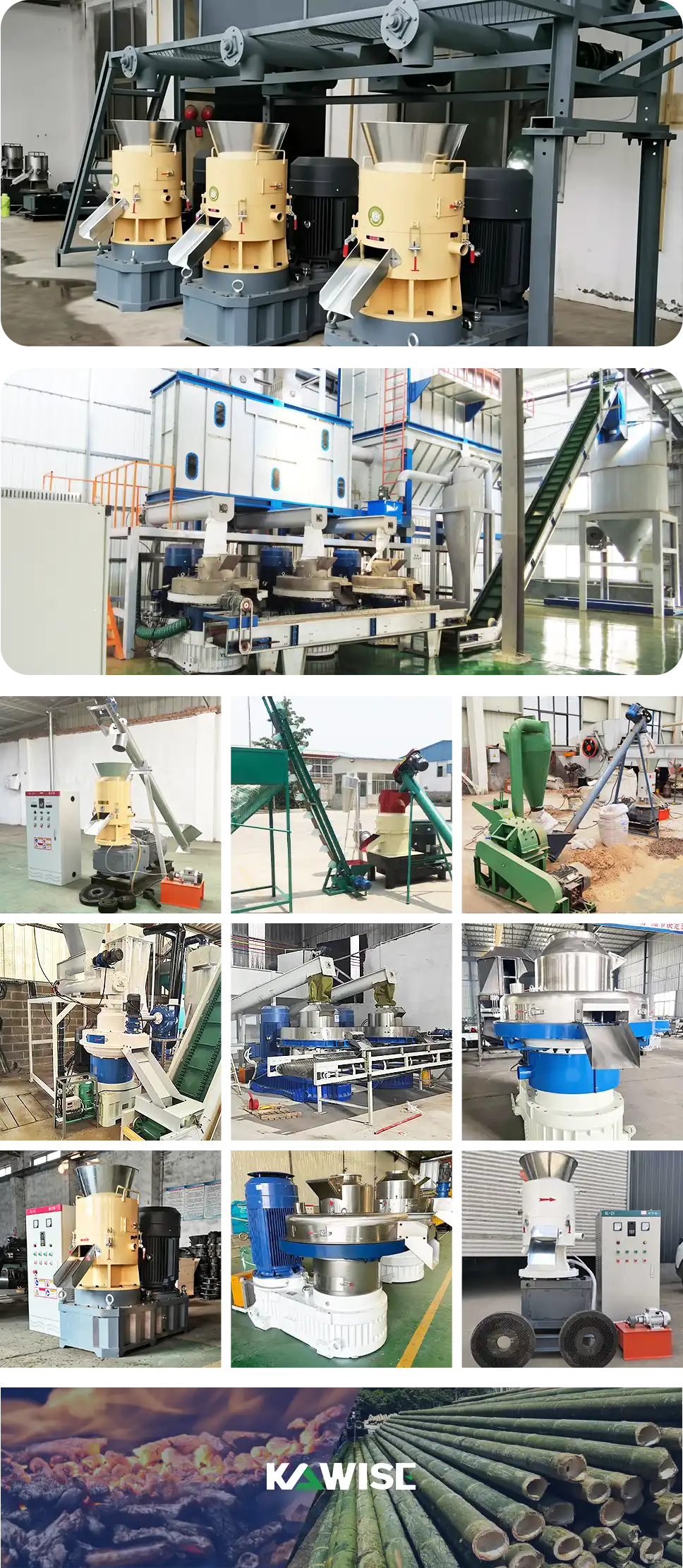
 Online Contact
Online Contact Send Message
Send Message
Need Some Help?
Contact us quickly and we will reply you within 24 hours. We will not disclose your information.